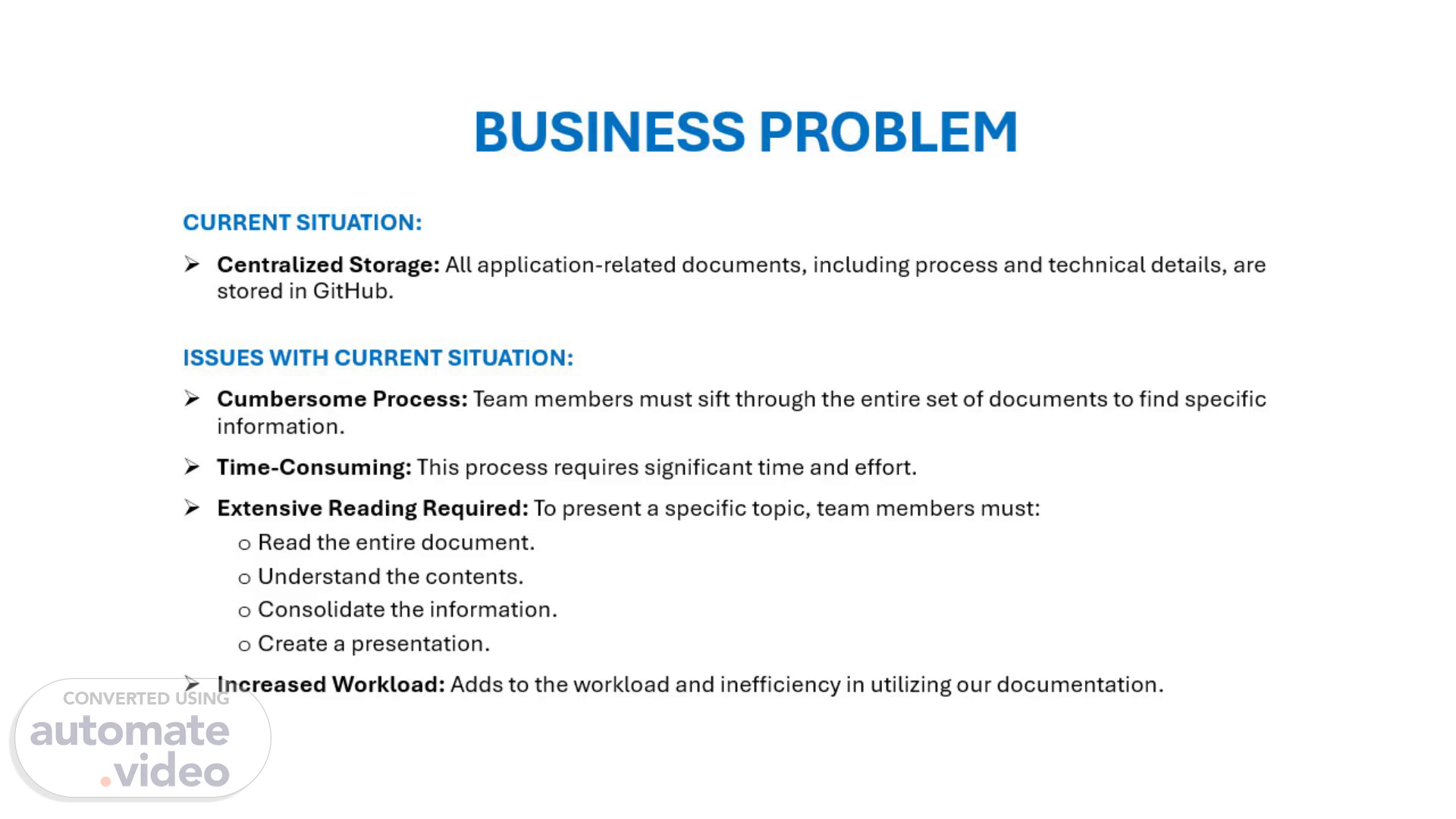Scene 1 (0s)
[Audio] We work for an application named IBM Executive Advocate Program(IEAP). IEAP is a service designed for large and strategic clients and partners, providing a senior executive advocate to build strategic partnerships, strengthen relationships, and explore new business opportunities within IBM's portfolio. Our application related documents are stored in Github. It covers functional, process, and technical details. If we need to find any specific details from that team members must sift through the entire set of documents to find specific information, which is time consuming and increases workload..
Scene 2 (39s)
[Audio] We used our application document from Github and created various prompts. Initially, we used 'Greedy' as the decoding method, while providing prompts. When we submitted prompts, it generated answers. However, we noticed that even for related prompts (similar questions), it provided the same response. Then we switched the decoding method to 'sampling' and observed that the answers varied with multiple prompts. By adjusting the attributes as shown in the video, we found that we received more accurate responses. In the 'sampling' decoding method, we modified the values for the various parameters such as temperature, top K, top P, etc. Afterwards while prompting, the model started eliciting appropriate responses..
Scene 3 (1m 28s)
[Audio] Below is a screenshot demonstrating a sample question asked and the response generated using the 'Granite Chat Model'. You can also notice the attributes values specified for the 'Sampling' decoding..
Scene 4 (2m 33s)
[Audio] Similarly, the screenshot illustrates a few more sample questions along with the responses generated by the model for the questions posed..
Scene 5 (3m 30s)
[Audio] This screenshot illustrates additional questions where the model failed to generate appropriate responses and displayed the corresponding messages..
Scene 6 (4m 27s)
[Audio] Using the Watsonx model to navigate business, technical, and process-related documents at our enterprise scale can have a profound impact. It significantly enhances efficiency by providing rapid and precise answers to specific queries. This not only saves time but also improves accuracy and consistency in information retrieval. AI-driven summarization and contextual search ensure that employees have quick access to relevant details, facilitating faster decision-making and better strategic planning. Additionally, the scalability of AI allows it to handle large volumes of documents seamlessly, making it an invaluable tool for managing extensive enterprise knowledge and driving overall productivity..
